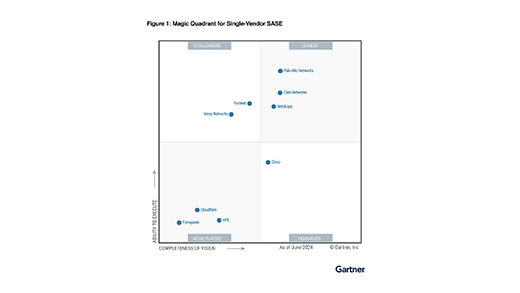In 2014, we launched a new area of research focused on the multiplier effect that the presence and growth of cloud services can create in data breach scenarios. We called this the Cloud Multiplier Effect.
At the time, we wanted to highlight the tremendous growth and usefulness of cloud services in enterprises, and at the same time, the risk of data breach that those cloud services create, both in terms of probability and magnitude. Based on a survey of IT and information security professionals, cloud services increased the probability and expected economic impact of a data breach.
We have again partnered with the Ponemon Institute to ask a broader set of survey questions intended to deepen our understanding of threats and the cloud. This year’s reports are based on a survey of 643 North America-based and 575 Europe-based IT and information security professionals.
Here are some of the highlights from the report, along with our take on a few of them. You can get a copy of the full report here.
Are cloud services more or less secure?
56 percent (NA) and 59 percent (EU) believe cloud services are as or more secure than on-premises ones.
What percent of business-critical applications are in the public cloud?
Respondents report that, on average, 40 percent (NA) and 27 percent (EU) of their business-critical applications are in the public cloud, and that only 16 percent (NA) and 13 percent (EU) of them are known or sanctioned. Juxtapose this against the average number of cloud services in enterprises that we have observed in many hundreds of Cloud Risk Assessments. According to the September 2016 Netskope Cloud Report, North American enterprises have 977 cloud services in use on average while European enterprises have 824. IT sanctions less than five percent of them, on average.
What percent of business data is in the public cloud?
Respondents report that, on average, 33 percent (NA) and 25 percent (EU) of their business information is in the public cloud, and that 33 percent (NA) and 25 percent (EU) of it is not known or sanctioned.
What percent of cloud applications are in compliance with privacy legislation?
Respondents report that, on average, 63 percent (NA) and 68 percent (EU) of their cloud applications are in compliance with privacy legislation. They also report that 37 percent (NA) and 35 percent (EU) of their regulated data are in these applications. According to the June Netskope Cloud Report, only one-quarter of cloud services are rated as EU General Data Protection Regulation (GDPR)-ready. These are obviously differently defined statistics, but gap between them given their similarity is notably vast.
What percent of organizations inspect cloud services for malware?
40 percent (NA) and 45 percent (EU) of respondents report that they inspect cloud services for malware. Said another way, 60 percent (NA) and 55 percent (EU) of respondents haven’t or don’t know if they inspect cloud services for malware. The number of organizations that don’t inspect for malware is huge! Also, if less than five percent of cloud services are sanctioned, it raises the question of whether respondents are really inspecting all of the potential services, making the portion of cloud services that aren’t inspected even larger.
How much malware is in cloud apps?
57 percent (NA) and 55 percent (EU) of respondents that inspected cloud services for malware found it. If you do the math and multiply those that don’t scan by those that find malware, you can infer that 34 percent (NA) and 30 percent (EU) of organizations have malware and don’t know it!
Does the cloud increase the probability of a data breach?
Despite the overwhelming majority believing that cloud services are as or more secure than on-premises applications, over half – 54 percent (NA) and 55 percent (EU) of respondents – believe that the use of cloud services increases or significantly increases the probability of a data breach.
Have organizations experienced a cloud-related data breach?
31 percent (NA) and 19 percent (EU) of respondents report having had one or more data breaches involving cloud services. Another 19 percent (NA) and 18 percent (EU) don’t know or can’t determine. In North America, the most commonly described breach was a user intentionally or accidentally exposing data from the cloud service (48 percent), whereas in Europe, it was that the cloud service itself was breached (38 percent).
Does the cloud increase the probability and expected economic impact of a data breach?
According to respondents, the probability that their organization will experience a data breach involving customer records in the next two years is 16 percent (NA) and 15 percent (EU), and involving theft of IP is is 26 percent (NA) and 16 percent (EU). When certain scenarios were introduced, such as growth in storage or backup of data to cloud services, those figures increased by more than 2x.
What should you do next? Here’s a handy five-step guide:
- Know what you have. Understand the cloud services in use in your organization, what their inherent risk profile is and why, and what sensitive data is in them?
- Govern cloud usage. Ensure cloud compliance by governing cloud usage. Enforce granular policies such as controlling access by device type or activities like sharing outside of the company. Monitor and report on policy violations.
- Protect sensitive data. Detect and protect regulated data, intellectual property, non-public financials, sensitive business documents, and more in sanctioned and unsanctioned cloud services.
- Detect and remediate threats and malware. Identify and remediate internal and external threats, including malware, in your sanctioned and unsanctioned cloud services.
- Shore up your incident response process. All of the tools in the world won’t help if you don’t have a well-defined, well-communicated incident response process for the cloud. It needs to run like clockwork because your organization practices it regularly.
Get the full report here, and sign up for the webinar that I’ll host in a few weeks with Ponemon Institute chairman and founder Dr. Larry Ponemon here.




 Back
Back 















 ブログを読む
ブログを読む